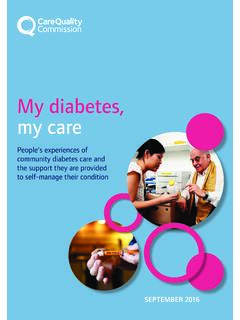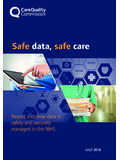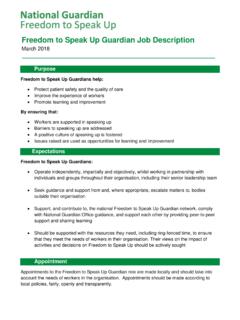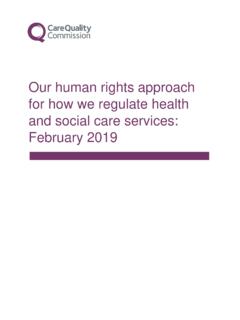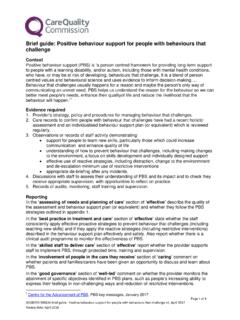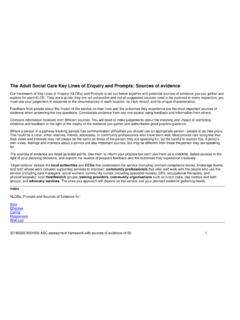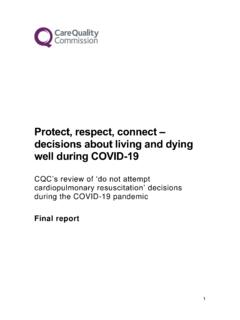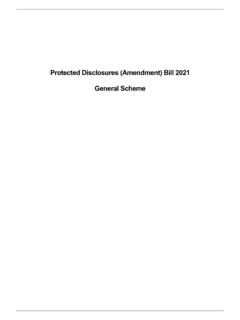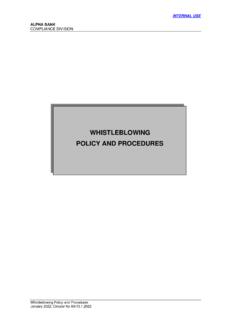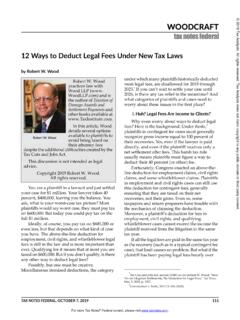Transcription of Code of practice on confidential personal information
1 Code of practice on confidential personal information September 2016 (reviewed and amended in May 2018 to reflect updates to legislation in 2018) CQC s Code of practice on confidential personal information September 2016 1 Contents Introduction .. 2 What is confidential personal information ? .. 2 Why CQC needs to obtain and use confidential personal information .. 3 Our approach to confidential personal information .. 6 The necessity test .. 9 Mental capacity considerations .. 11 Children and young people .. 12 practice 1: Obtaining confidential personal information .. 13 Obtaining information by using our powers .. 13 Purposes for which we can use our powers .. 13 Consent when CQC is using its powers.
2 14 Obtaining confidential personal information by other means .. 17 Lawful basis to obtain confidential personal information where our statutory powers do not apply .. 18 Record of CQC s access to health and care records .. 19 practice 2: Using confidential personal information .. 20 How CQC uses confidential personal information .. 20 practice 3: Disclosure of confidential personal information .. 22 How CQC discloses confidential personal information .. 22 How CQC publishes information .. 23 How CQC shares information .. 24 practice 4: Securely handling confidential personal information .. 25 How CQC keeps confidential personal information secure .. 25 Healthwatch England .. 27 Freedom to Speak Up National Guardian.
3 27 How to access information about you that CQC holds .. 28 How to object to CQC accessing or using your information .. 29 Appendix: Further guidance on confidential personal information .. 30 CQC s Code of practice on confidential personal information September 2016 2 Introduction Purpose of the Code of practice This Code establishes the practices that the Care Quality Commission (CQC) will follow to obtain, handle, use and disclose confidential personal information . We intend this Code to be used in two main ways: By our staff, as a guide to help them make decisions about confidential personal information . All our staff are required to comply with this Code and receive guidance and training to help them in this.
4 By other interested parties, such as people who use services, carers, the public, providers of health and social care, and other regulatory bodies, to understand how we use their confidential personal information . The Code will also reassure people when we are requesting information or using our powers to obtain information , and provide a point of reference against which our practice can be judged. The Code provides clear and easy-to-follow guidance to support our staff in making lawful, ethical and appropriate decisions in relation to confidential personal information . It also tells the public how to access information that CQC holds. The appendix provides links to other, more detailed guidance on key issues.
5 This supports this Code of practice , but is not part of it and we will update this list as appropriate. What is confidential personal information ? The Health and Social Care Act 2008a is the law that created CQC in its current form. It defines confidential personal information as information that is: obtained by the Commission on terms or in circumstances requiring it to be held in confidence . and that: relates to and identifies an individual . This means that the information must say or reveal something private, personal and of meaning about someone, and that it must also reveal who that person is (either by itself, or when combined with other information that we hold). This information may relate to any person who has directly or indirectly come into contact with CQC.
6 A. Section 80(5). CQC s Code of practice on confidential personal information September 2016 3 information that is already publicly or widely known, or that a reasonable person would not expect CQC to keep secret, is not confidential personal information . Examples of confidential personal information : A person s medical or care records, or specific pieces of information about their physical or mental health, condition or treatments. information about a care provider s social or family life. Details of a care worker s education, training and experience. information about the sexuality, religious beliefs and racial or ethnic origin of a CQC employee. information that would identify people who have shared information in confidence with us, including people who use the services we regulate, whistleblowers , and people we have interviewed in private during inspections.
7 Examples of information that is not confidential personal information : information relating to a registered manager that we are required to publish on the register on CQC s information that does not identify an individual. For example, the number of registered nurses working in a hospital. information about a CQC employee that they should reasonably expect to be available to the public; for example, information about salaries and pay grades that CQC is required to publish. Of course other information that CQC uses, which doesn t relate to or identify an individual, may need to be handled with a degree of confidentiality. F or example, commercially sensitive documents relating to procurement of services or CQC s market oversight function.
8 Such information is not covered by this Code, but we publish an information Security and Governance Policy that sets out how we protect all types of confidential information . A link to the current version of this policy is included in the appendix of this Code (page 30). Why CQC needs to obtain and use confidential personal information Access to confidential personal information plays an essential role in CQC s inspections and the wider regulation of health and social care services in England. CQC reviews confidential personal information , including information from medical and care records, because at times it is a necessary way of helping us to understand the quality of people s care and to ensure that we achieve our purpose of making sure people receive safe, effective, compassionate, high-quality care, and encouraging services to improve.
9 B. Under section 38 of the Health and Social Care Act 2008. CQC s Code of practice on confidential personal information September 2016 4 For example, we may need to access confidential personal information to allow our inspectors to assess whether: providers of care are using care plans to ensure that people receive person-centred care that meets their clinical and personal needs, particularly o lder people and people with long-term conditions (such as diabetes or dementia), people with a learning disability, and other people who may be vulnerable because of their circumstances lessons have been learned from complaints and serious incidents to improve safety and care, and whether care providers have met their duty of candour to explain and apologise for serious mistakes the rights of people who have been detained under the Mental Health Act are being respected and protected medication records are kept properly information has been shared properly (lawfully, effectively and appropriately)
10 Between care services people are properly involved in decisions about their care, they are asked to give their consent, and their decisions are respected safeguarding concerns are being appropriately acted on to ensure that people who may be vulnerable are being protected from abuse and harm. We also obtain information in a number of other ways, outside of our inspections, to help us to monitor the quality of care, prioritise our work, and identify problems with services that may require us to take regulatory action. We do this in a number of ways, for example: We invite people who use services to share their experiences with us. We share information locally and nationally with other organisations involved in commissioning, providing and regulating care (for example, local authorities, NHS Improvement, and professional regulators).
